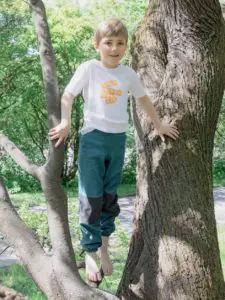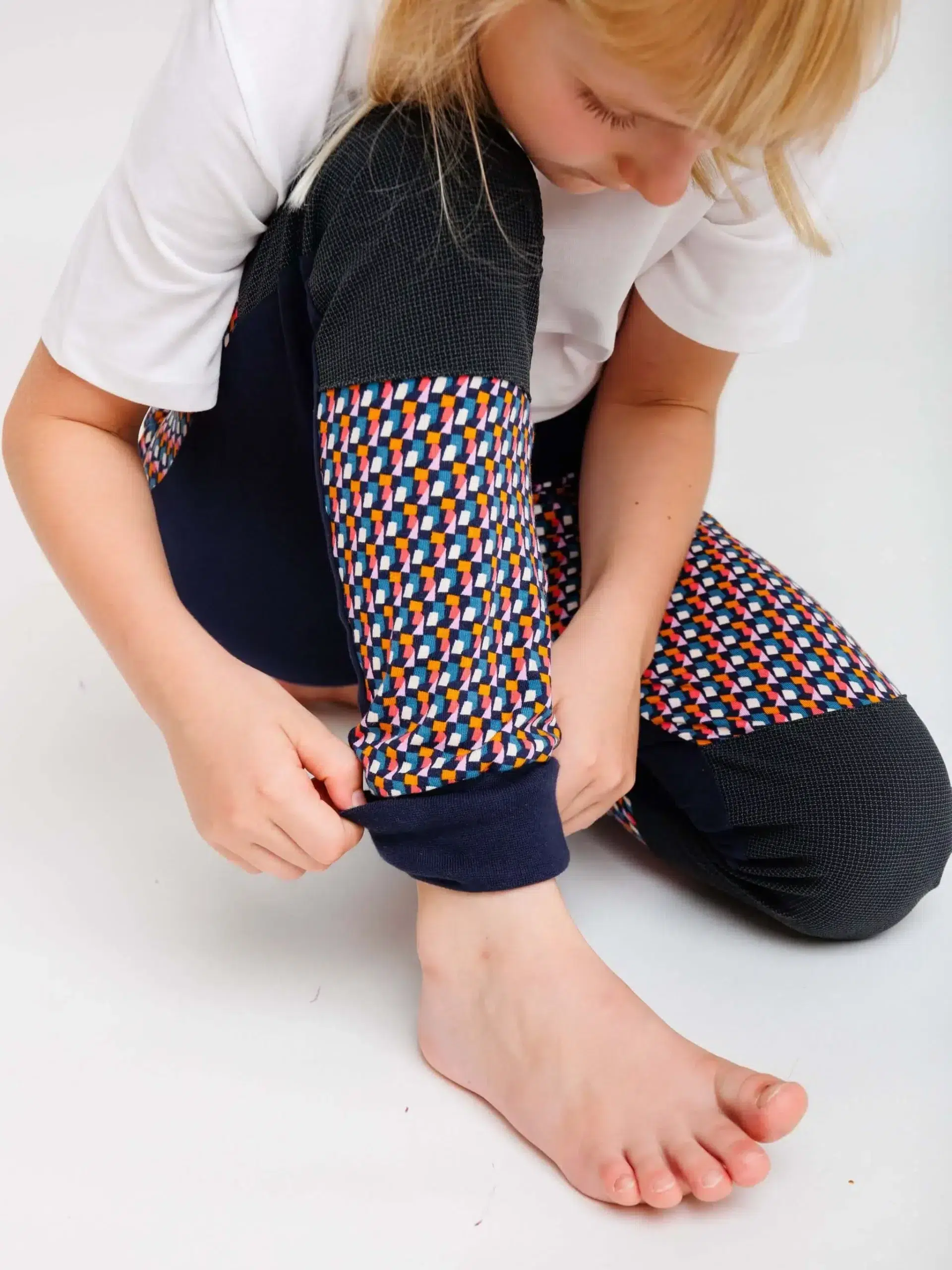Uncategorized
Money, Fashion, Power: the themes of Fashion Revolution Week 2022 in conversation with Elena, founder of Babbily
You have the power to push the fashion system towards the path of sustainability: how do you convey the value of sustainable and ethical garments to consumers?
All fashion – whether sustainable or not – is about visuals and the feel-good factor. We understand the impact that fashion has on the environment, but we also realise that being dogmatic or gloomy about it can be off-putting. So we are trying to send this positive feel-good message of having fun with children while gently educating people about environmental impact and how being a responsible consumer can bring about positive change. It’s a win-win situation – enjoying fashion while also creating a feel-good factor about helping the environment.
What always stays the same is comfortable designs that are created for active children. And that’s why our garments become favourite staples in the wardrobe, because we know how important it is for children to be active and to wear comfortable clothing that allows them to do whatever they want.
Timeless staples over trends: how do you define the aesthetics of your brand? Quality over quantity: which materials characterize your collections?
Timeless doesn’t have to be about style. For us, it’s about comfort and enabling children to have fun in their daily activities.
Working with children is a real privilege. While it’s adults who make purchasing decisions and we create classical pieces that stay relevant for many seasons, we look at the clothes we create from a child’s perspective and have fun with the patterns and colours we use in our limited editions. What always stays the same is comfortable designs that are created for active children. And that’s why our garments become favourite staples in the wardrobe, because we know how important it is for children to be active and to wear comfortable clothing that allows them to do whatever they want.
We use organic cotton for all our collections. Additionally, we test fabrics for durability, to make sure our clothes look good even after many cycles of washing and tumble-drying. That’s the essence of the brand – children’s clothing that is comfortable and can be worn for several seasons while staying relevant and fresh for adults and children.
Price tags do not convey the real value of a product: how much does it affect production? How important are the social and environmental costs? In the traditional fashion sector, still too little. The costs related to the image and positioning of the brand and the share allocated to profits have a greater impact. How are your prices made up instead, as a sustainable and ethical business? Is part of the earnings reinvested in virtuous projects?

As a sustainable brand, I think we are in a completely different category to high-street brands in terms of pricing and margins. Because we create grow-along garments for children, we dedicate a lot of time and resources to developing patterns that fit for 4 sizes, and to testing prototypes. We also work with local European suppliers at all stages of the business, from sourcing materials to developing and testing new designs through to production and marketing. This allows us to reduce our environmental impact, and also means we have greater control over quality.
As of now, the focus of the business model is on investing and supporting local communities and working with other small businesses at every stage of production process. Being part of this ecosystem and being able to support it is equally valuable. Whenever we can, we work with projects that create social impact – for example our leggings are made by a social enterprise in Austria that helps women get back to work. And recently we’ve been donating 10% of all sales to help support refugees from Ukraine. In the longer term we also have a goal of investing a portion of our profits into environmental causes.
As for pricing, we know that our clothing creates value for families and the environment, but we still have to compete with traditional brands and the deeply ingrained instinct to look for bargains. For us this is a question of helping people understand that lower prices don’t necessarily mean better value. For example, let’s suppose you’re comparing different leggings. One pair costs 20 euros but you know you’ll have to buy a new pair in a couple of months. The other brand costs 40 euros and will last six months. Over a year you’d spend less on the second brand, and have less of an impact on the environment. So we are all about getting people to look further than just the up-front costs and make conscious decisions about buying less to get more.
Practical and functional clothing for children, but also respectful for their health: why is it so important for the little ones to prefer certified natural fabrics such as GOTS organic cotton?
Fashion brands talk about sustainability in lots of different ways, and it can be confusing for consumers to know what they actually mean. For example, “organic” doesn’t mean a product is good for everyone – organic cotton can still contain chemicals, so it’s not a guarantee that it would be suitable for children with sensitive skin, for example. So it is important to look at certification, as there are lots standards on the market, and some of them unfortunately border on green-washing.
For Babbily as a brand it is important for us to work with an established and widely respected certification that we trust. That’s why we choose GOTS as not only a guarantee of an organic production process, but also fair working conditions for the people who make the fabric.
Using organic cotton is only part of the solution. Building a sustainable future for our children is about more than just the short-term benefits of wearing organic cotton. We also need to mitigate the potentially devastating impacts of climate change over the longer term, and to do this we need to reduce the environmental impact of the whole fashion value chain. That’s a key part of the rationale for creating clothes that can be worn for longer and handed down once children grow out of them.
Children who grow up and clothes who grow along with them… a wonderful idea! Can you explain us better?
For me this is still a bit like magic, even though we are working on it every day. The secret is understanding how children grow and developing the patterns accordingly. Children grow very fast, but this growth doesn’t happen just in one part of the body, say the legs or the arms. It’s distributed through the whole body. We use this knowledge to create garments that continue to fit for months or even years.
I can let you in on one little secret. My chief testers have a three and a half year age gap. Every time I create a pattern, I test it on both of them, and if it fits them both and looks good then it’s good to go.
Do you want to tell us more?
There are lots of things that both brands and consumers can do to make fashion more sustainable while not taking the fun out of it. I have lots of ideas for growing the Babbily business, whether that’s by developing new designs or making clothes for different age groups, or for new partnerships or innovations in the production process.
We also love tackling practical challenges. For example, one of the first things that I worked on when starting Babbily was developing a solution to knees wearing out, which is something that every parent finds exasperating when it comes to children’s clothes.
Whatever we do next, the basic principles will remain the same – we will always be creating comfortable, good-looking clothes that children love to wear and that are good for the planet at the same time.
Full article https://www.sustainablegate.com/en/collezioni/money-fashion-power/




 Whatever we do next, the basic principles will remain the same – we will always be creating comfortable, good-looking clothes that children love to wear and that are good for the planet at the same time.
Whatever we do next, the basic principles will remain the same – we will always be creating comfortable, good-looking clothes that children love to wear and that are good for the planet at the same time.